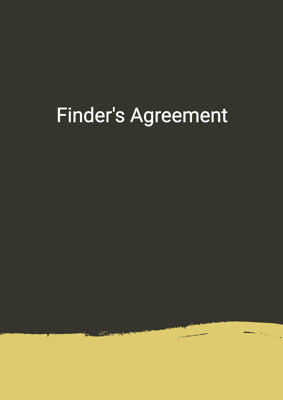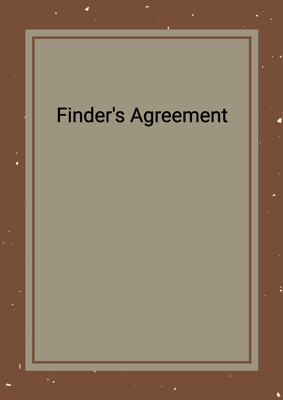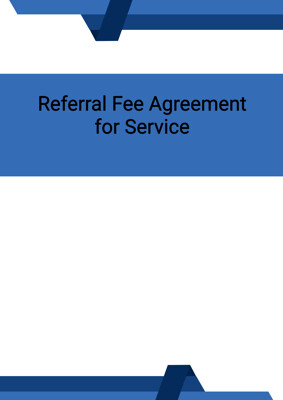How to Tailor the Document for Your Need?
01
Create Document
Fill in the details of the parties. You can click the "Fill with Member’s Information" button to complete it with information saved to your account.
02
Fill Information
Please fill in any additional information by following the step-by-step guide on the left hand side of the preview document and click the "Next" button.
03
Get Document
When you are done, click the "Get Document" button and you can download the document in Word or PDF format.
04
Review Document
Please get all parties to review the document carefully and make any final modifications to ensure that the details are correct before signing the document.
Document Preview
Document Description
The Profit Sharing Agreement is a legally binding document that outlines the terms and conditions for sharing profits between two parties, namely the Company and the Participant. The document begins with a brief introduction, highlighting the importance of the agreement in facilitating the sharing of profits from the sale of products. It then proceeds to provide a detailed explanation of each section of the agreement.
Section 1: Interpretation
This section defines key terms used throughout the agreement, such as 'product' and 'value of product'. It explains how the net value of the products will be calculated and excludes certain charges.
Section 2: Term
The term of the agreement is specified, indicating the period for which the Participant is engaged to source buyers for the products. It also allows for the possibility of extension by mutual agreement.
Section 3: Profit Share
This section outlines how the profit share will be calculated, based on a percentage of the net value of products purchased by third-party buyers as a result of the Participant's efforts. It specifies that subsequent purchases by the same party will not be subject to a profit share. It also establishes the process for invoicing and payment.
Section 4: Responsibilities of the Parties
This section details the responsibilities of both the Company and the Participant. The Participant is expected to use their connections and channels to find prospective buyers for the Company's products. They are authorized to disclose certain information about the Company to potential buyers. The Participant is also granted the right to use the Company's trademarks and other intellectual property for selling the products. The Company, on the other hand, is responsible for delivering the products to the buyers referred by the Participant and complying with relevant laws and regulations.
Section 5: Confidentiality
This section addresses the confidentiality of information exchanged between the parties. The Participant is required to treat any confidential information provided by the Company as confidential and not disclose it without prior written consent. However, they may disclose relevant information to buyers and potential buyers as necessary to secure a purchase.
Section 6: General
This section clarifies the relationship between the parties as independent contractors and specifies the procedures for giving notices and waivers. It also includes provisions regarding the modification of the agreement and the entire agreement clause.
Section 7: Termination
This section outlines the circumstances under which either party can terminate the agreement, such as breach of provisions or insolvency. It also addresses the consequences of termination, including the cessation of promotional activities and the settlement of outstanding fees.
Section 8: Consequences of Termination
This section further elaborates on the consequences of termination, emphasizing that the Participant has no claim against the Company for compensation, except for unpaid fees. It also clarifies that both parties are relieved of further obligations under the agreement, except for accrued rights or obligations.
Section 9: No Rights under Contracts for Third Parties
This section states that third parties have no right to enforce any terms of the agreement.
Section 10: Law and Jurisdiction
This section encourages the parties to resolve any disputes amicably and in good faith. It also includes a jurisdiction clause specifying the applicable law and jurisdiction for any legal proceedings.
Section 11: Notices and Service
This section explains the methods of serving notices, including delivery by hand, email, or post. It provides specific guidelines for determining the time of service and includes the addresses and contact information of both parties.
In conclusion, the Profit Sharing Agreement is a comprehensive document that covers all aspects of sharing profits between the Company and the Participant. It establishes clear terms and conditions, defines responsibilities, and ensures confidentiality. It also includes provisions for termination and dispute resolution, providing a solid framework for the business relationship.
How to use this document?
1. Review the definitions: Familiarize yourself with the definitions provided in Section 1 of the agreement, such as 'product' and 'value of product'. This will help you understand the calculations and exclusions mentioned throughout the document.
2. Understand the term: Note the specified term of the agreement in Section 2. Make sure you are aware of the duration for which you are engaged to source buyers for the products.
3. Calculate the profit share: Refer to Section 3 to understand how the profit share will be calculated. Take into account the percentage of the net value of products purchased by third-party buyers as a result of your efforts. Exclude any charges mentioned in the agreement.
4. Invoice and payment process: Follow the invoicing process outlined in Section 3. Issue an invoice to the Company upon reconciliation of the profit share due to you. Ensure that payment is made within thirty (30) days of submitting the invoice.
5. Fulfill your responsibilities: Review Section 4 to understand your responsibilities as the Participant. Utilize your existing connections and channels to find prospective buyers for the Company's products. Adhere to the guidelines for disclosing information and using the Company's trademarks and intellectual property.
6. Delivery and compliance: Note the Company's responsibilities in Section 4. They are responsible for delivering the products to the buyers referred by you and complying with relevant laws and regulations.
7. Maintain confidentiality: Abide by the confidentiality provisions outlined in Section 5. Treat any confidential information provided by the Company as confidential and only disclose it to authorized individuals as necessary.
8. Understand termination conditions: Familiarize yourself with the conditions for termination stated in Section 7. Be aware of the circumstances under which either party can terminate the agreement and the consequences of termination.
9. Seek amicable resolution: In case of any disputes, follow the guidance provided in Section 10. Make reasonable efforts to resolve the dispute amicably and in good faith.
10. Serve notices correctly: Adhere to the guidelines for serving notices outlined in Section 11. Ensure that notices are delivered by hand, email, or post, and that the timing of service is in accordance with the agreement. Use the provided addresses and contact information for both parties.
Remember, this guidance is a summary and should be used as a reference. Always refer to the actual agreement for complete and accurate information.
Not the right document?
Don’t worry, we have thousands of documents for you to choose from:














